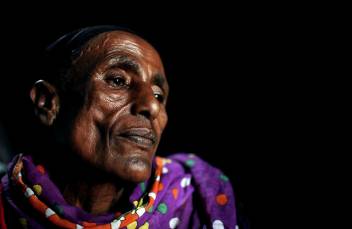 Marking a good week for HelpAge’s work on HIV, the WHO’s Global Update on the Health Sector Response to HIV, that was launched last week recognises the health-related challenges faced by people in their 50s and older living with HIV.
Marking a good week for HelpAge’s work on HIV, the WHO’s Global Update on the Health Sector Response to HIV, that was launched last week recognises the health-related challenges faced by people in their 50s and older living with HIV.
This comes quickly after the UNAIDS Gap Report that included a standalone chapter on why people in this age group are being left behind in the HIV response and the changes needed to address that.
Growing number of older people living with HIV
The WHO report focuses on the health sector response to HIV. It highlights the growing number of people aged 50 and over living with HIV and the fact that this trend will continue.
As a result, the report points to the need for HIV prevention services, as well as others, such as TB screening – to respond to older people’s needs.
The report challenges the misconception that people aged 50 and over are no longer sexually active or at risk of infection. It includes data from HelpAge-funded research in Uganda, in which half of the men surveyed reported being sexually active.
Health challenges of ageing with HIV
The report focuses on the health challenges faced by people living with HIV in their older age. It discusses some of the issues they face in relation to anti-retroviral therapy (ART) access and adherence, highlighting that access may not yet be equitable and that people in their 50s and over on treatment experience higher rates of mortality.
This is often linked to the complex health challenges they face, including the increased risk of multiple health conditions, alongside HIV, including both communicable and non-communicable diseases.
The report calls for closer integration of ART with the care systems for other chronic and non-communicable diseases. It also recognises that chronic HIV care is a great opportunity to screen for, monitor and manage chronic non-communicable diseases and mental health disorders, especially important for people aged 50 and over who are living with HIV.
Recognition must translate into action
UNAIDS’ and WHO’s recognition of the ageing of HIV and the importance of addressing its neglect in the response, is a very welcome step. HelpAge has been working towards this for many years; but challenges remain.
Highlighting the issues faced by people living with HIV in their older age in policies and reports is crucial, but recognition must be translated into action.
While HelpAge has been successful in working with National AIDS Councils and Commissions to ensure people aged 50 and over are recognised in National Strategic Frameworks on HIV, these references are rarely matched with funding for implementation.
Neither The Global Fund To Fight AIDS, Tuberculosis and Malaria or PEPFAR (the US President’s Emergency Plan for AIDS Relief) – the two donors that account for an average of 80% of global HIV assistance – mention the ageing of HIV or the needs of people living with the virus in older age in their global strategies. This has to change and we must work to ensure it does!
Find out more about HelpAge’s work on HIV and ageing.
